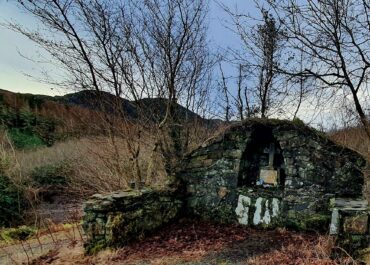Penal Mass station, Kiltyfergal, Co. Donegal
In the townland of Kiltyfergal, County Donegal, a site once marked on Ordnance Survey maps as a 'dolmen' tells a story of mistaken identity and hidden history.
Penal Mass station, Kiltyfergal, Co. Donegal
When antiquarian William Copeland Borlase catalogued it in 1897, he classified it as a prehistoric monument, and subsequent scholars followed suit, listing it as a ‘prehistoric chamber tomb’ in the 1960s. By 1904, however, all physical traces of the structure had vanished, leaving only its mark on old maps and in archaeological records.
What makes this vanished site particularly intriguing is that it was almost certainly never a megalithic tomb at all. Instead, it belonged to a category of monuments that dotted the Donegal landscape during the era of the Penal Laws; a Mass station where Catholic communities gathered for worship when their religion was outlawed. These makeshift altars, often constructed from rough stones in remote locations, were frequently misidentified as prehistoric monuments by 19th century surveyors who either didn’t recognise their true purpose or chose not to acknowledge it.
The confusion wasn’t unique to Kiltyfergal. Throughout County Donegal, numerous sites marked as ‘dolmens’ on the six-inch Ordnance Survey maps were actually these clandestine places of worship, where priests risked imprisonment or worse to minister to their congregations. The removal of the Kiltyfergal site by the early 20th century reflects a common fate for these Penal altars; once Catholic emancipation made them unnecessary, many were dismantled, their stones repurposed or scattered, leaving only documentary evidence of their existence.


